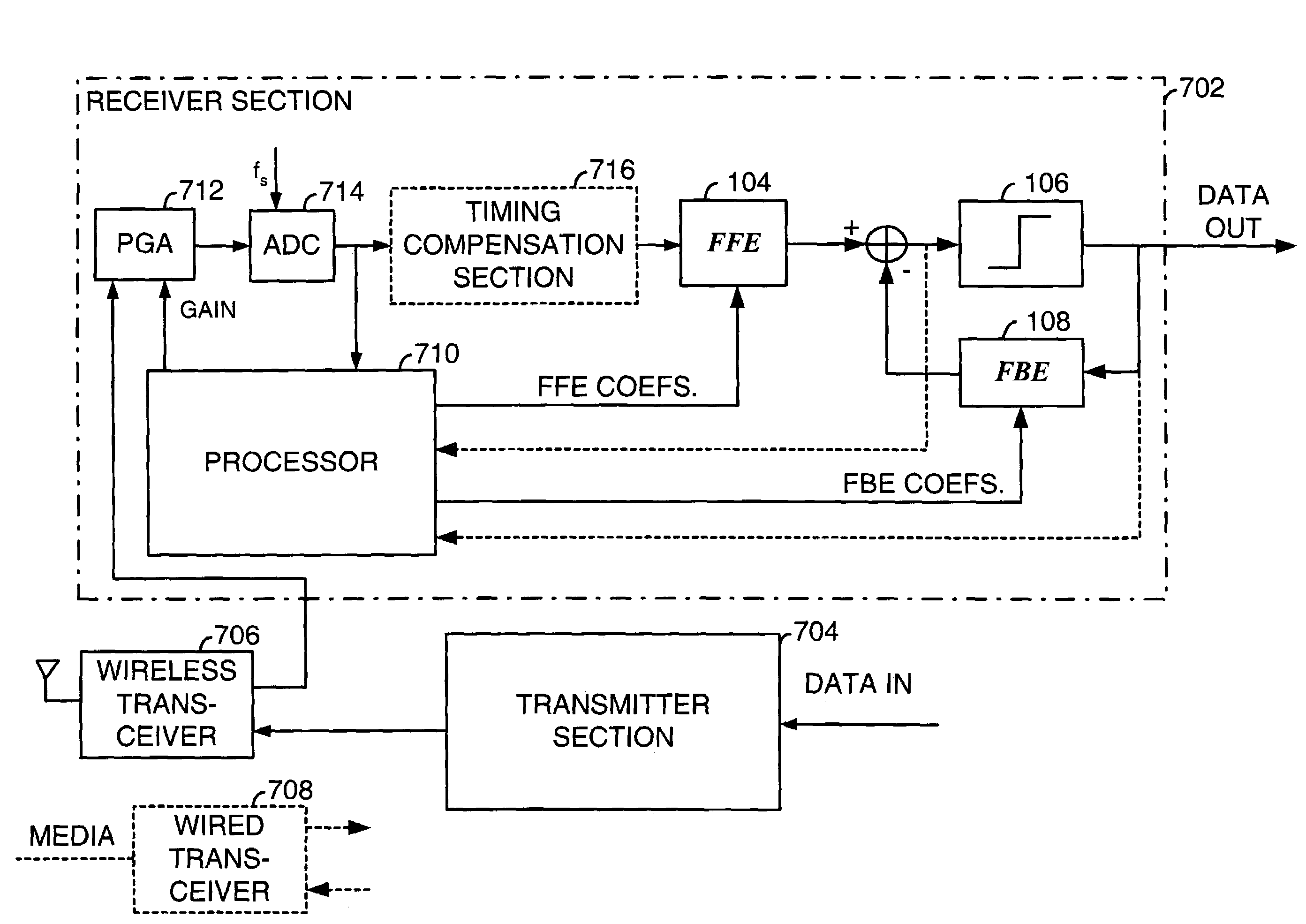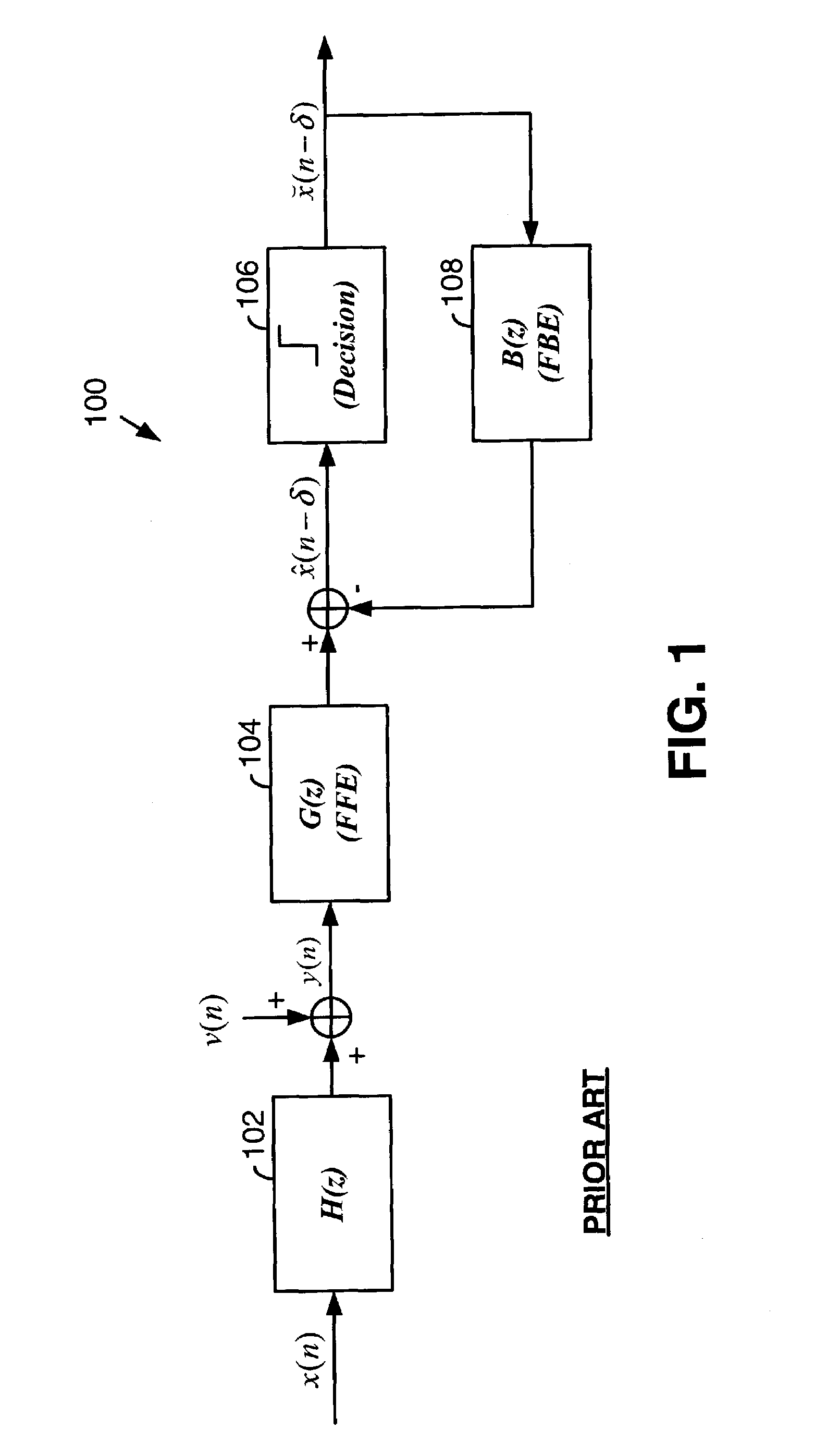Fast computation of coefficients for a variable delay decision feedback equalizer
a feedback equalizer and variable delay technology, applied in the field of digital communication, can solve the problems of complexity of optimal equalizer coefficient computation, channel also introduces noise into the symbols, interference between a subject symbol and a plurality of symbols, etc., and achieves the reduction of computation complexity, significant reduction of computation period and/or hardware required for dfe coefficient computation, and increase computation speed
- Summary
- Abstract
- Description
- Claims
- Application Information
AI Technical Summary
Benefits of technology
Problems solved by technology
Method used
Image
Examples
first embodiment
[0159]FIG. 14 is a logic diagram illustrating operation according to the present invention in selecting FBE coefficients. This operation includes first selecting an initial equalizer delay value (step 1402). Then, for the particular equalizer delay value (FBE delay), the operation includes calculating a set of FFE coefficients and FBE coefficients (step 1404). Then operation then includes determining the FBE tap energy for the particular FBE delay (step 1406). If this FBE tap energy is less than a FBE tap energy threshold (as determined at step 1408) the FFE and FBE coefficients determined for the particular FBE are employed (step 1414). If the FBE tap energy is not less than the FBE tap energy threshold (as determined at step 1408), it is next determined whether the FBE delay is at a maximum (step 1410). If so, no acceptable FBE coefficients have been determined for the particular channel response and FBE configuration, the operation has failed (step 1416). However, if the FBE dela...
second embodiment
[0160]FIG. 15 is a logic diagram illustrating operation according to the present invention in selecting FBE coefficients. This operation includes first selecting an initial equalizer delay value (step 1502). Then, for the particular equalizer delay value (FBE delay), the operation includes calculating a set of FFE coefficients and FBE coefficients (step 1504). Then operation then includes determining the FBE tap energy for the particular FBE delay (step 1506). The operation then includes storing the FFE coefficients, the FBE coefficients, and the FBE tap energy along with the particular FBE delay (step 1508). It is next determined whether the FBE delay is at a maximum (step 1510). If so, the FFE coefficients, FBE coefficients, and FBE delay is selected that corresponds to a minimum FBE tap energy (step 1516) of all solutions that have been stored. If the FBE delay is not at the maximum FBE delay (as determined at step 1510), the equalizer delay is increased by a step size (or otherw...
PUM
 Login to View More
Login to View More Abstract
Description
Claims
Application Information
 Login to View More
Login to View More - R&D
- Intellectual Property
- Life Sciences
- Materials
- Tech Scout
- Unparalleled Data Quality
- Higher Quality Content
- 60% Fewer Hallucinations
Browse by: Latest US Patents, China's latest patents, Technical Efficacy Thesaurus, Application Domain, Technology Topic, Popular Technical Reports.
© 2025 PatSnap. All rights reserved.Legal|Privacy policy|Modern Slavery Act Transparency Statement|Sitemap|About US| Contact US: help@patsnap.com



